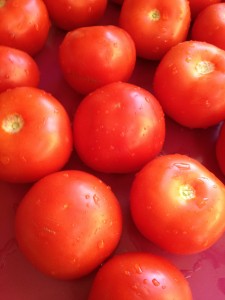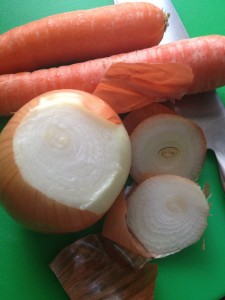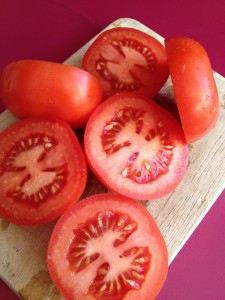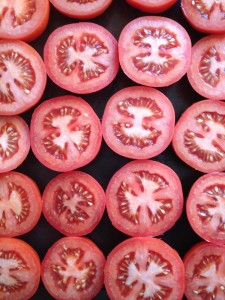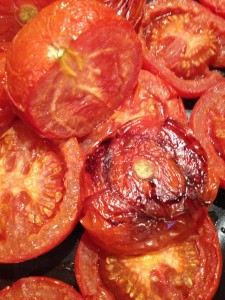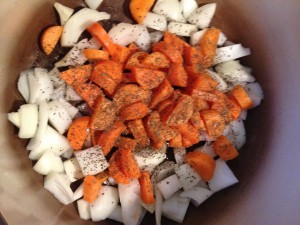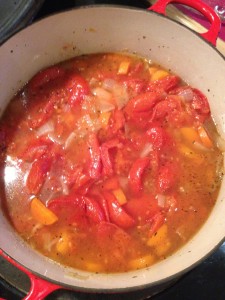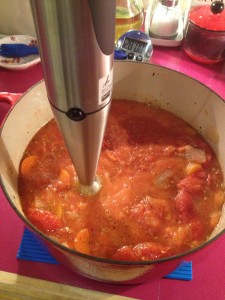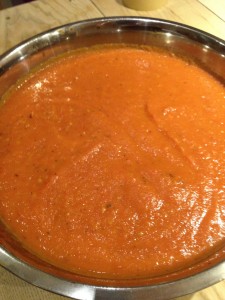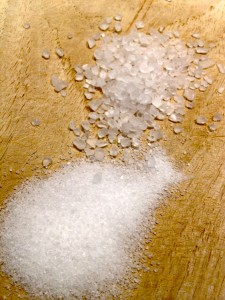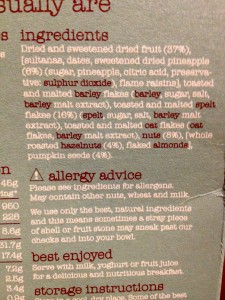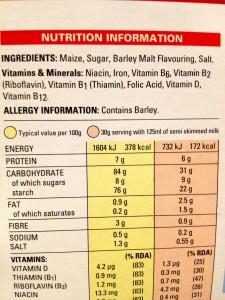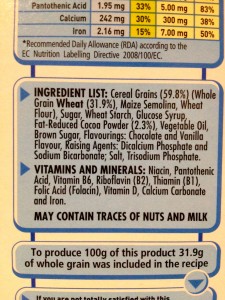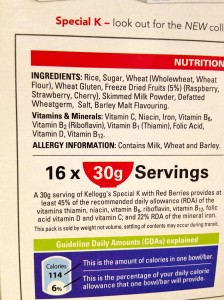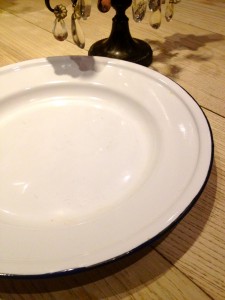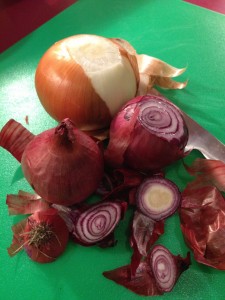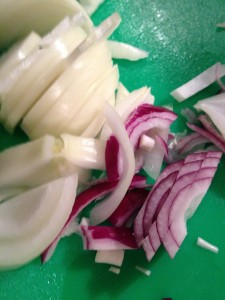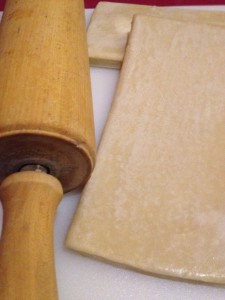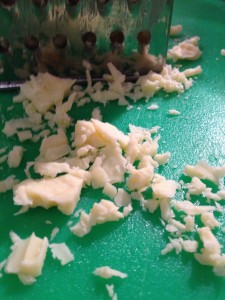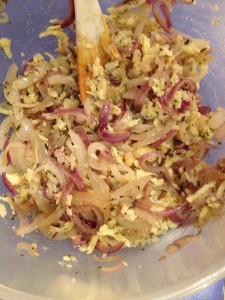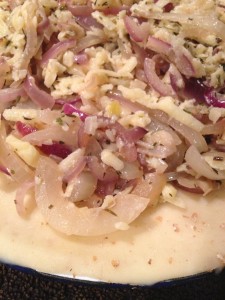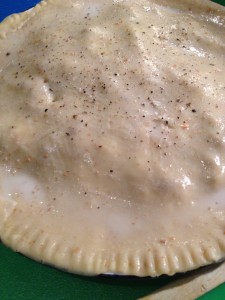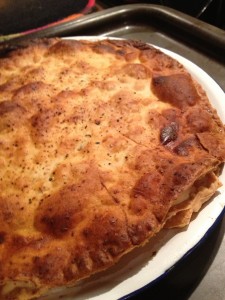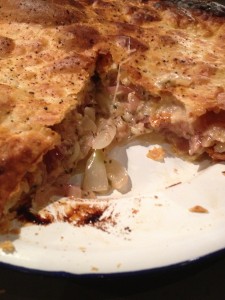Basically this story starts with a can of Campbell’s condensed soup – ‘mmm mmm good’ and all that. I loved this soup so much and then, as seems to happen with favorite items, the company discontinued it. Thanks Campbell’s. Okay, okay…they haven’t discontinued it, but they have repackaged it with the twee new name of ‘Old Fashioned Tomato Rice soup’…’You may also like Chicken With Rice…’, they chirrup…well, no, actually I would not, so naff off. Anyway, as I’m the snippy sort, I’ve turned my back on the tinned version and started making my own.
Hold on though, let me tell you something else. It’s december and I’m buying tomatoes?!?! What’s wrong with me?!? They’re not in season! Britain’s growing season is officially March till October (and that’s pushing it, love) so what in the name of Devi Annapurna am I doing buying tomatoes in December? Pur-lease. They’re not that great at the best of times but come on, some flown-in, carbon footprint wrecking, insipid tasting, red orbs that have been bred to please our body fascist aesthetics in some far flung land are hardly the way forward. No wonder I’m roasting the poor forced darlings…(breathe, breathe…)
Anyhoo…
As I’ve said before I’m a bit rubbish with the whole recipe malarkey as I usually make it up as I go along but I’m bowing to pressure and attempting to include one here…well…it’s a recipe of sorts…don’t judge me!
- 16 tomatoes (cos that’s what I had) – try greengrocers or market stalls for tomato deals. Chances are they might think the tomatoes are at the end of their tether but that’s when they are ideal for this soup. Don’t be afraid of produce that’s not body-beautiful or a tad past it’s prime – everything has its time and place.
- A right big beggar of an onion – chopped up
- A couple of medium sized carrots – washed, trimmed and chopped up
- Few choice herbs. I flung some dried basil in. Ubiquitous to add basil I know but the dried stuff seems to work and you’re more likely to have it as a store cupboard staple (arent you?!) I’ll be honest and tell you that as I was rummaging for a green herb to add I saw paprika so I pinched a soupçon (terrible pun) of that in too…I’m on the edge arent I?!?
- Chicken broth – obviously this could be/should be vegetable stock (Marigold boullion being my choice of the powder form. This only applies if you’re not a pupil of Nigella and don’t have a freezer full of old ice cream containers with various stocks you’ve made earlier…) – anyway, I like the chicken undercurrent and it’s all there was today so…
- A mug of rice. I use brown as it’s just better for you and the nuttier taste adds a certain something I think, but the original was of course bleached white grains that mushed in your mouth. Hmmm…gak!
Chop the tomatoes across their middles and place them on their heads and tails on a roasting tray. Brush a touch of olive oil over them and season if you fancy. Bear in mind the stock will be salty, unless you use a reduced sodium version, but even so go easy on the salt please. Let the flavour of the tomatoes be the queen here and not usurped by salt! Roast these for a good 40 minutes in a hottish oven or until they are starting to colour and seem to dry out as-it-were.
You could turn the oven down really low and just let them shrivel and intensify (not burn though!) and you’d have delicious slow roasted tomatoes which you can keep in the fridge for a good while (especially if you keep them in olive oil) and add them to everything. Bliss.
Anyhoo…after you’ve put the tomatoes in put the rice on to cook and then when the tomatoes are nearly done sauté the onions and carrots with the basil (keep them moving as you don’t want them to catch, just to surrender). After a few minutes add the stock and let the whole thing gently simmer till the tomatoes are ready. Add them to the broth and carry on simmering them to get them all to mingle like a middle class suburban swingers party. Get in! Or just turn off the heat, put a lid on it and let it cool down.
Once it’s cool enough to blend, do so. I use a hand held jobbie as I can’t be faffed with all the back and forth of a blender…but do what you have to do. Blend it to the consitency you fancy…that’s your choice and let no one take it from you! Add the rice…and voila!
BTW tomatoes are pretty good for you too. These fruits contain vitamins (A,C and E) and flavonoids (anti-inflammatories) and minerals. The biggest fuss is about their lycopene content. This is an antioxidant that mops up free radicals (that damage your cells), and therefore help in the battle against cancer, and has been linked recently to healthier, less wrinkly skin – score! Two very important factors to consider are that, firstly, the tomato must be eaten whole to get the true benefits (surely life’s too short to peel a tomato anyway…sheesh…!) AND the ‘meddled-with’ tomatoes that arrive from abroad have usually been bred to last longer and this can potential negate their health benefits…so, as I like to say at any opportunity, gorge on them when they are in season and then forget about them for the rest of the year…
…thank you.
